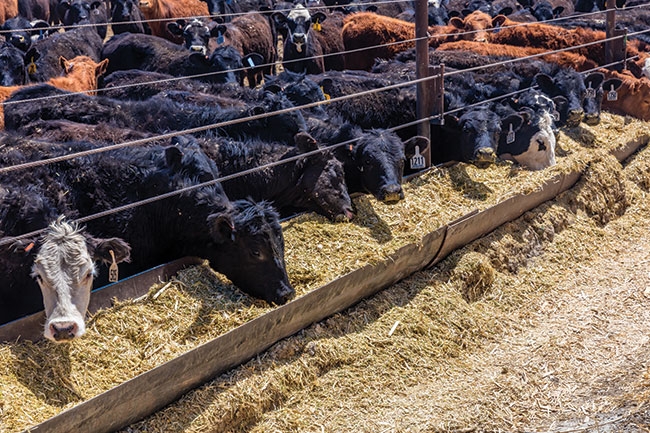
Features
Animal Housing
Applications
Beef
Environment
Environment Protection
Livestock Production
Manure Management
Sustainability
Dry weather and feedlot runoff
May 18, 2018 by Shawn Shouse
 Photo: Dreamstime
Photo: DreamstimeYou might wonder what dry weather and feedlot runoff would have in common. On the one hand, a spell of dry weather can cause expanding areas of moderate drought and dry soils. But dry conditions also make for an excellent time to maintain your feedlot runoff control system.
Extended dry periods create the perfect opportunity to remove settled solids from your basin or other areas where manure solids collect. Whether it’s a settling basin, a settling bench or terrace, or even the bottom end of feedlot pens, dry weather is a great time to get out there with the loader, box scraper, or other equipment to remove accumulated solids. Land apply the solids at the proper time if you have application areas available, or stockpile them in a controlled area if they need to wait. Make sure the stockpile area is either within the runoff control boundaries for your feedlot, or in an area that is protected from runoff and water flow when it rains. High and dry is the short description of a good stockpile location.
While you’re removing separated solids, be sure to check the liquid outlet from the settling area. If you’re using a picket dam or perforated riser to control the outflow, make sure the openings are clean and in good condition. Remember, the purpose of the controlled outlet is to hold liquid in the settling area until solids can settle, and then slowly drain the settled effluent off to an area where it can soak into the ground. Too much opening can let liquids through before solids can settle. Plugged openings can prevent dewatering and drying of the solids.
While you’re tending to the settled solids removal, take the opportunity to evaluate other parts of the system as well. Check the clean water diversion portions: rain gutters on buildings, clean water diversion terraces, and clean water tile drains. Then check your runoff controls beyond the settling area. If you pump your effluent to an application area, check the pump, controls and piping. If you let gravity do the work, follow the flow path down the hill from your settling area and see where it ends. If it ends on flat ground in a pasture, field, or treatment area, you’ll see a few more manure solids that settle and accumulate there, with no eroded gully beyond. If it ends in a waterway, ditch or stream, your manure could be causing negative impacts and putting your operation in regulatory and financial risk.
Shawn Shouse is an agriculture engineer with Iowa State University Extension. He can be reached at 712-769-2650, sshouse@iastate.edu.